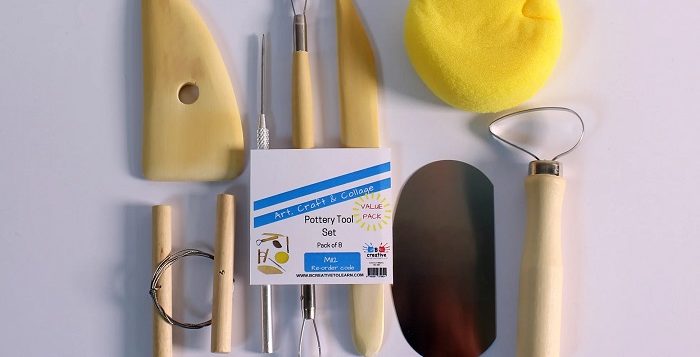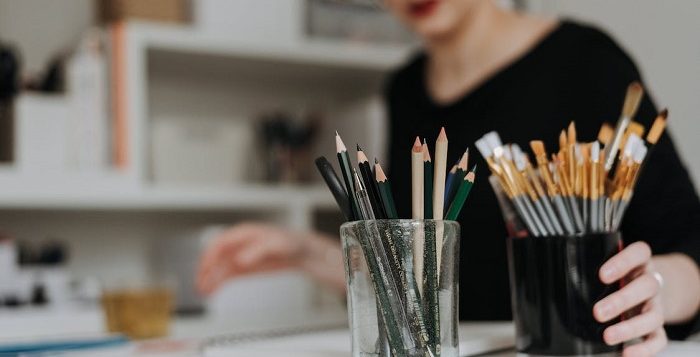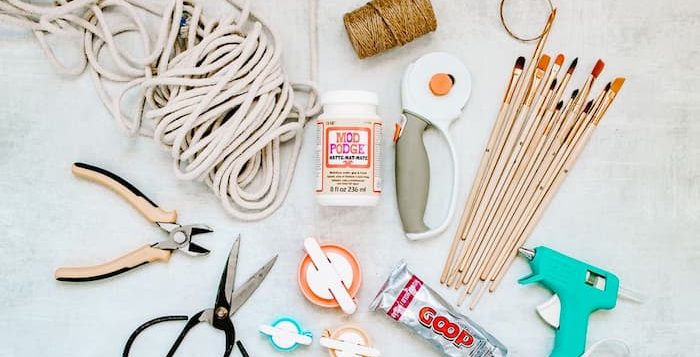Creating art is more than just applying paint to a surface. The quality of the artwork is deeply connected to the surface an artist chooses. Just like the right brush or paint, the right painting surface can significantly affect the final result. For beginners and experienced artists alike, understanding various art surfaces is necessary for improving technique and bringing out the best in their work.
Art
6 Simple Steps to Take Your Vacation House Decor to the Next Level
As we approach the dog days of summer, it’s the perfect time to retreat to our vacation homes. Whether nestled in the mountains or situated in a charming seaside town, we all desire our second homes and vacation rentals to be beautiful, functional, and low maintenance. From reflecting on the local surroundings to investing in smart home technology, here are six simple steps to elevate your vacation home decor.
Graffiti Mastery: 6 Items to Step Up Your Spray Paint Art
Graffiti or spray paint art isn’t just limited to the streets anymore—it’s become a widely respected and appreciated form of artistic expression. What was once considered rebellious vandalism is now celebrated as legitimate art, drawing in curious tourists to cities around the world.
If you’re new to graffiti and want to take your art to the next level with the right tools, you’ve come to the right place. Below, you’ll find a list of six essential graffiti supplies to help you step up your spray paint game. Whether you’re looking to refine your technique or experiment with different styles, these items will set you on the path to graffiti mastery.
Photo Prints: The Ultimate Home Decor Statement Piece
Are you looking for creative ways to elevate the look of your interior design? Look no further as we have the right idea for you! By choosing high-quality photo prints you can instantly enhance your home appeal, and make it look more inviting. However, to choose the right prints you need to pay attention to specific factors.
From Sketch to Masterpiece: Thoughtful Gift Ideas for Aspiring Artists
If you have an artist or a creative person in your life, surprising them with the right gift can be quite challenging. The wide range of gift options can easily boggle your mind and you can find yourself not knowing where to start. Does the person love to paint? Are they into graphite sketching or maybe thinking about switching things up and starting digital art? Many questions to ask yourself, but they can help you determine what gift would best suit the artist.
If they love to sketch and draw, pencil sets as a gift will be highly appreciated. If their greatest passion is painting, a lovely set of watercolours or acrylic paints will ignite their spark to create the next masterpiece. Inspire them with a book from their favourite artist, or help them embark on their digital art journey with an iPad pen or iPad stand.
Candle Crafting Essentials: Steps to Selecting the Ideal Moulds
Candle-making is a fun activity that over the years has grown a lot. According to some studies, the Australian Candle Market has a growth of 11.11% in value shipments in 2022 in comparison to 2021, and an increment of 8.88% CAGR in 2022 when compared to a period of 2017. So, if you like many others are into this prosperous business occupation, aside from investing in some obvious supplies, you really shouldn’t forget about candle-making moulds.
These functional supplies are extremely useful since they have a ‘special power’ to give candles a large selection of shapes and designs. And, even though in the past the shape of candles was basic and ordinary, nowadays you can choose from a large selection of candles ranging in shape thanks to the large selection of moulds. And while the shape of moulds is crucial for their appearance and appeal, you really should pay more attention to the moulds’ material.
Which Mold Is Best for Candle Making?

These days, making candles is pretty easy because of the large selection of versatile and easy-to-use candle moulds, but the key to choosing the right one is considering their material. All models are seamless, flexible and easy to use, allowing you to achieve just the needed effect. You just need to take into account all materials and pick the ones you consider the best for your needs.
Aluminium
Even though some other metals can be used for the purpose, it seems that aluminium is among the most commonly used metals for candle making. These moulds are extremely durable and resistant to high temperatures which makes them perfect for repetitive use as long as you need. Usually, they come as one-piece simple moulds that have no design or patterns on them.
Practice shows that these moulds can help you create high-quality and smooth-sided candles because of their great unmoulding capacity. Being a metal means that moulds made from aluminium are a bit pricier when compared to other materials, however, their durability, quality and result cannot be compared with anything else. The only downside is that they come in simple shapes with no design on them, and they aren’t compatible with beeswax.
PVC
PVC (polycarbonate) or plastic moulds are light and durable, and they’re one of the most commonly used moulds for candle making. Even though they’re considered heat-resistant, they aren’t as resistant as aluminium, so it’s said that they can resist up to 120 °C. They’re transparent and ideal for making coloured candles, but just like aluminium, PVC moulds aren’t compatible with beeswax.
Unlike metal moulds, these can be available as one and two-piece moulds, so you can use them depending on the type of candle you want to make. For a standard candle type you can use the one-piece mould, and for a more complex one, you can choose the two-piece mould. PVC moulds are available in numerous shapes and sizes and provide a simple, easy and smooth unmoulding.
Silicone
Silicone moulds are another popular choice not only in the candle-making market but also in the food industry as well. They’re lightweight, easy to use and clean types of moulds that can allow for making candles from different types of waxes, even from beeswax.
When compared to the other types, silicone moulds allow for achieving even some complex details which is something that cannot be achieved with aluminium and PVC moulds. When cleaned and handled properly, they can last you many years, however, if you don’t take good care of them, they won’t handle their shape.
Latex
Latex moulds for making candles are recommended only for original candle shapes. Candles made in latex moulds are beautiful and appealing, with precision in details. An important thing to have in mind about these moulds is that they aren’t recommended for use with stearin. This is because stearin tends to stick to the latex material, which makes it difficult to remove the candle from the mould. Therefore, latex moulds are mostly used for paraffin or beeswax candles.
How to Clean Them?
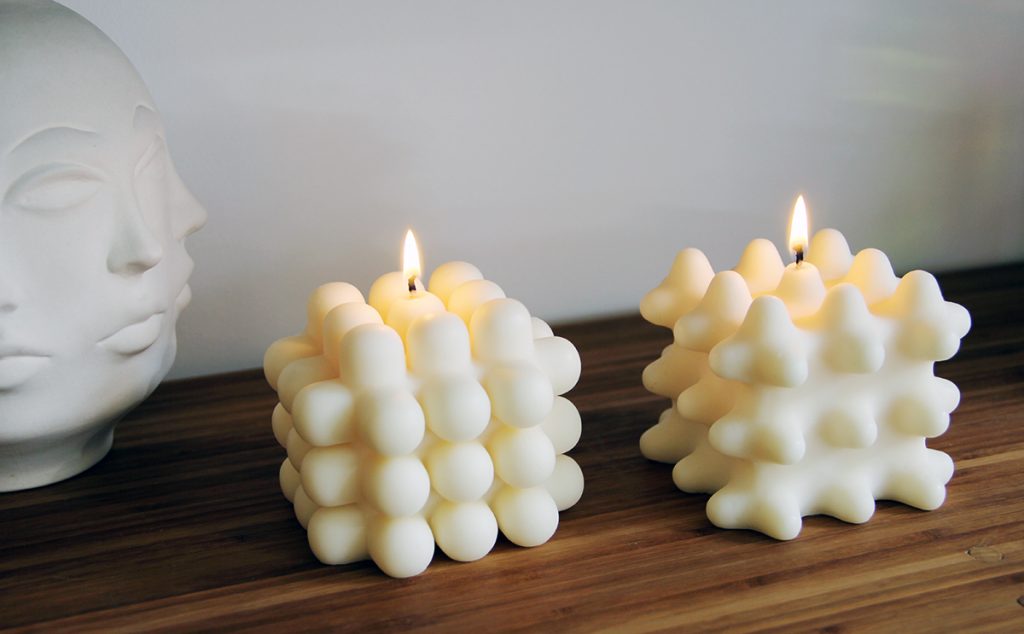
Regardless of the type of the type of mould material you choose, cleaning them properly and regularly is of vital importance in order to prevent wax buildup. To clean silicone moulds, all you need is soap and water to wash them by hand, or you can simply toss them in the dishwasher which can save you a lot of time. Once clean, dry them thoroughly and keep them in a dry and cool place. The same cleaning procedure can be used with both aluminium (or any other metal) and PVC moulds, whereas the latter should only be cleaned by hand.
When clean, all of them should be stored in a cool and dry place. This goes especially for silicone moulds since humidity can deform and misshape them. In case you need to store them in a more humid environment, make sure to place them in an airtight container to avoid further damage.
Clay Moulding 101: Essential Clay Tools for Beginners
Just like painters need specialised artist pencils to create their art, artisans need the right set of clay tools to perform their clay moulding projects. And this is true for both beginners and seasoned pros. Without the proper tools, you won’t be able to smooth out the edges of your creation for a clean look, add lines of texture for a fun visual aspect, give your project a beautiful finish, and so on.
Simply said, tools are required to make your task easier and your end product professional. Nowadays, you can find a variety of clay tools available on the market. What tools are used in clay art? If you’re new to sculpting, you might be unsure about which ones to choose, so here is a list of the essentials for any clay artist.
A Clay Mat
First of all, you’ll need a surface to work on your clay project. A clay mat not only helps protect your counter or table surface, but it also doesn’t impact your project or technique. Plus, using a clay pad helps keep your creation in one spot. The mat will not move while you work and can be easily wiped clean.
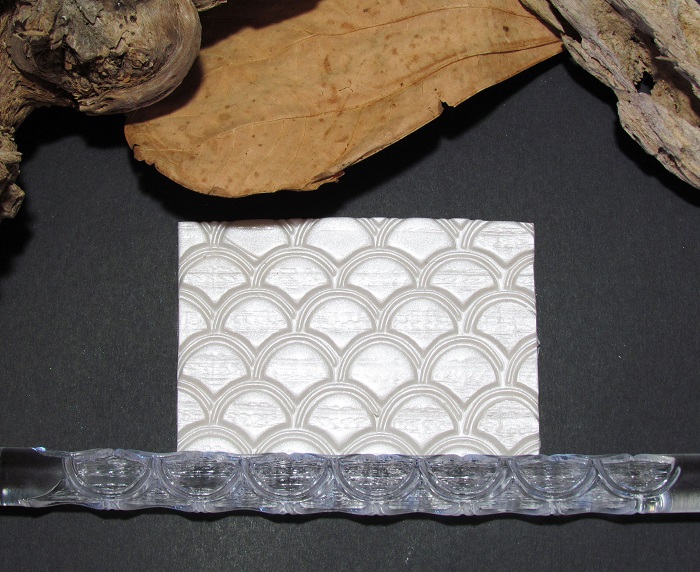
Clay Roller
Certain projects require your clay to be flat and smooth. A roller will help you achieve that. I suggest you get an acrylic roller as it is intended for use with clay. It will leave no roller traces on your clay surface and the clay will not adhere to the roller.
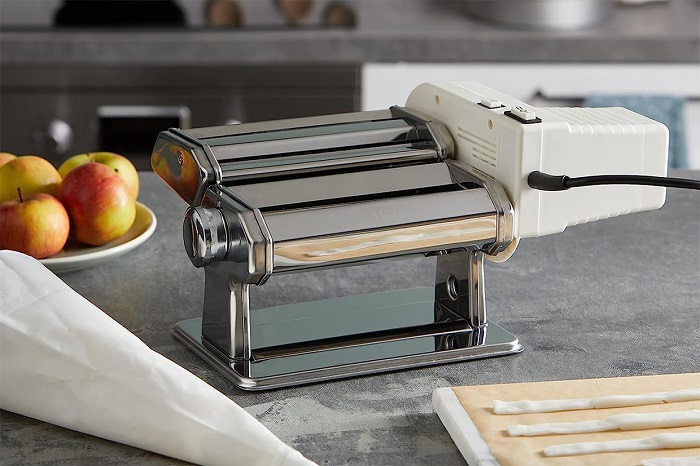
Sharp Knife Tool
To cut shapes out of clay sheets or add detail to your design, you’ll need a knife. The knife pottery tool is also useful for removing portions of clay from your design that are too small for your fingers to reach.
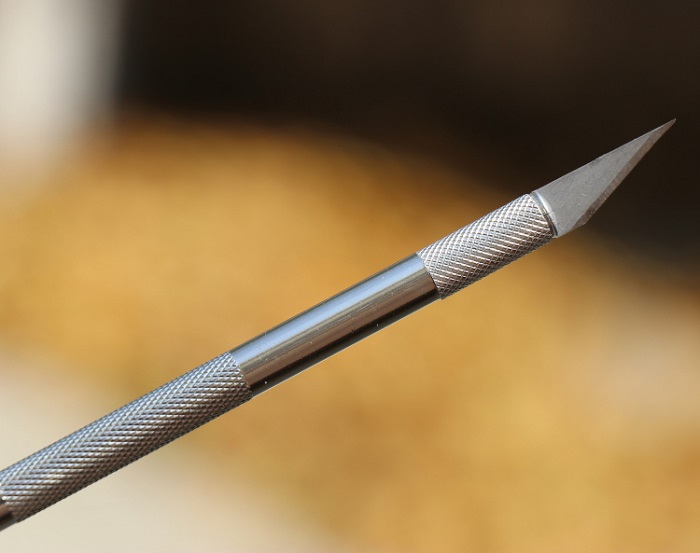
Sculpting Tools
Even if you’re a beginner, there are some clay sculpting tools that are a must-have. As you start using them, you’ll see how they can make your life easier. Try out:
- Wire-tipped tools: These sculpting tools have stiff wires protruding from the top. They’re a great clay tool for dragging across the surface of your clay sculptures to create wrinkles. The creases can then be smoothed out using a brush.
- Twisted wire rake: Two or more wires are twisted together and bent to make a loop with this clay sculpting tool. This tool is ideal for integrating irregularities and imperfections on the surface of a clay pot.
- Fine loop: These clay sculpting tools are comprised of twisted solid wire loops that help with wrinkle details and gouge outlines.
- Mini wire brush: A small wire brush made out of clumps of wire buried in a chopstick. These can be used to smooth down difficult-to-reach sections of your clay sculpture.
- Ball end tools: These clay sculpting tools are designed to simulate the tips of our fingers and can do everything our fingers can, such as dragging and pushing clay around, but on a smaller scale. These tools are available in a variety of sizes.
- Loop cutters: Almost every sculptor’s table will have one of these. For carving into the sculpture, these are the traditional clay sculpting tools.
- Rubber-tipped tools: These are sometimes used for painting, but you will find them really handy for mixing parts of clay. They are available in a variety of sizes and forms.
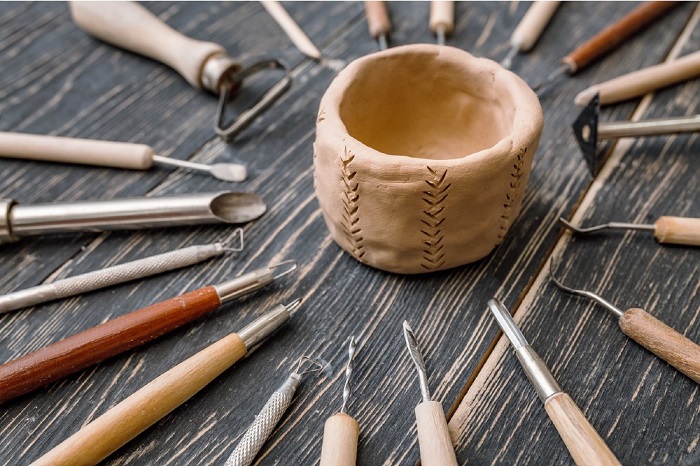
A Rib
A rib, also known as a clay scraper, is a thin, flexible piece of metal that resembles a bigger version of a scoring tool but lacks a handle. This tool is frequently curved and can be used for scoring, producing imprints, cutting, sectioning, and even smoothing surfaces. You may smooth or level out the surface of your clay sculpture or maintain consistent consistency and depth on your clay sheets by utilizing the trailing edge of a rib.
A rib or scraper may also be used to produce complex texturing, however, some of the other tools on this list can also aid with this. Furthermore, a scraper may be used to assist clean up an area after you’ve finished working, making it much more useful!
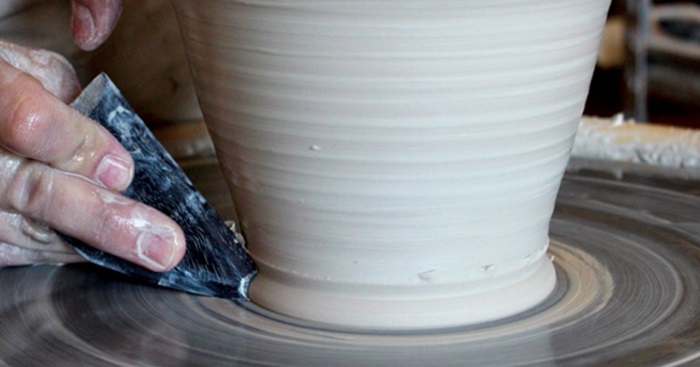
Sponges
Sponges are used in ceramics to clean, smooth clay surfaces, absorb excess water, wipe workplaces, and apply glaze. Their versatility makes them a crucial asset to any ceramic artist’s toolset.
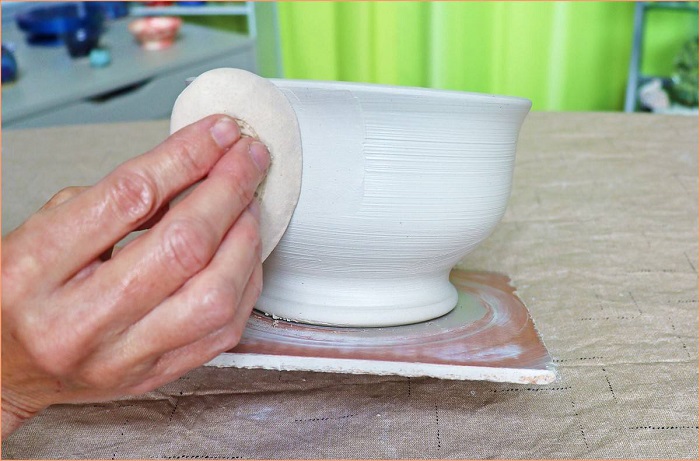
Dry/Wet Sandpaper
Sanding is an essential step in creating a professional-quality product. It will remove any irregularities and leave a smooth surface. Wet/dry sandpaper sheets are an excellent tool for this. It will remove fingerprints from your craft without harming the clay. For the greatest results, get a variety of grits.

Pottery Wheel
You don’t have to use a pottery wheel, but it may be a game changer in terms of opening up options that make your basic pieces stand out. A pottery wheel, unlike a kiln, will not drain your bank account. Although you can use a home oven in the place of a kiln, there isn’t a thing that can substitute a pottery wheel.
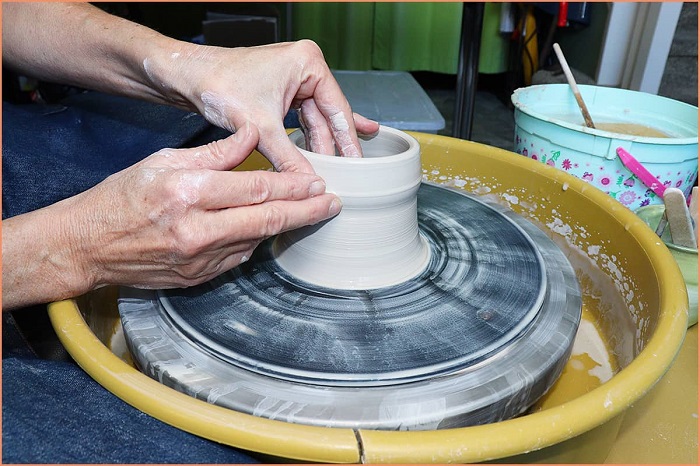
A Deep Dive Into the World of Artist Pencils: Types, Techniques, and Tips
There’s nothing quite like expressing your creativity through the use of art – with a few strokes of a pencil, you can create something wonderful. You don’t have to be a skilled artist to get started either. In fact, many of us have been sketching and doodling away since childhood, and let’s just say we don’t always need a lot of time or elaborate supplies to create masterpieces.
That being said, having the right art supplies makes a huge difference in your artistic journey. Among the most important tools that serve as the backbone for any creative endeavour is a well-crafted artist pencil set with several different types and shades to choose from.
What’s the Step to Ensure Scrapbooking Success? Acquire the Essential Craft Tools!
With so many scrapbooking supplies, products, and craft tools on the market to support the creative process of scrapbookers, you may need suggestions on which novice scrapbook materials to purchase. I believe this useful assortment of crafting materials will be perfect for your upcoming tasks.
Step Up Your Gifting Game with 15 Best Gifts for the Animal Lover in Your Life
Consider yourself lucky if you have an animal lover on your holiday shopping list this year. Yes, truly. Shopping for someone else can be difficult, especially if you don’t know what they’re interested in. However, because you already know what they like, you can get a head start on whether they’re a cat lover, dog lover, or even an unusual animal lover.
RECENT POSTS







